The Best Camera Phones
If you’re looking for an alternative camera phone to the all conquering Apple iPhone, there are quite a few contenders worth taking a look at. LG, Samsung, Nokia and Sony Ericsson all have models that offer good digital cameras combined with a 3G mobile phone.
 LG GC900 Viewty Smart:
LG GC900 Viewty Smart:
The LG GC900 Viewty Smart device has a great 8-Megapixel camera to complement the 3G and Bluetooth capabilities. It has an impressive 800x480-pixel touchscreen and an S-class user interface, which brings the functions easily to hand.
The LG GC900 Viewty Smart could just about replace your average digital camera, if you’re a casual photographer. The device has an LED flash, built-in autofocus, smile detection, continuous shooting, image stabilisation, a 4x digital zoom and face tracking. And unlike many digital cameras, the LG GC900 Viewty Smart can also geo-tag your photos.
As well as taking great still pictures, the camera also has DVD-quality video capture and boasts a total of four video modes, ranging from the standard 176x144 mobile resolution up to the default 720x480 mode.
The non-camera functions are of varied quality. While Internet access is a bit disappointing, with the web browser probably the weakest point of the camera phone, the S-class interface works well and the media playback options are good. It can handle the normal formats, such as MP3, WAV, WMA and ACC, it has a built-in FM radio and can play back DivX and XviD video formats without problems.
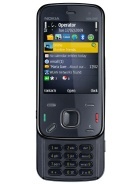 Nokia N86 8 MP:
Nokia N86 8 MP:
This camera phone is Nokia’s first foray into the world of 8-Megapixel cameras and they have incorporated some pretty impressive features. The 28mm wide-angle lens, for example, which gives approximately 20% more angle of view than competing camera phones. Throw in autofocus capabilities, variable aperture and dual LED flash, not to mention geo-tagging and you have a useful camera.
But there are a few noticeable omissions, compared with the offerings from likely competitors. For example, the N86 doesn’t have face recognition, blink detection or smile recognition, although it does have a panorama facility. The wide-angle lens however does cause some loss of detail as it fits more of the picture onto a standard size sensor.
The Nokia has a built-in GPS receiver with satellite and hybrid views and also features a digital compass. Internet browsing is a breeze with an easily controlled zoom level and modifiable font sizing makes it easy to fit a lot of text on the screen.
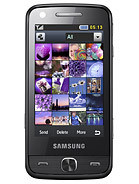 Samsung M8910 Pixon 12:
Samsung M8910 Pixon 12:
This Samsung is based on the original Pixon M8800, but has been upgraded, significantly adding a 12-Megapixel camera. In fact it seems that the Samsung is happier in the role of a camera than a mobile phone, as it is filled with camera options, some of which work well and others not so well.
Take the SmileShot option, for example. It seems a grin that would make a Cheshire cat envious is required to trigger the smile sensor. The beauty mode sounds fantastic, but again in practice it makes little difference to pictures.
On the other hand, the Smart Auto autofocus function works very well, allowing for a quick sequence of pictures without worrying about focus and so on. Even at 12-Megapixels, the camera only requires around a second between shots – if picture preview is turned off, of course. A Xenon flash works well for still shots and the Samsung has an LED flash for video mode – a smart compromise.
As a phone, the Samsung M8910 is not a top of the range device, but it does work. The touchscreen is sometimes difficult to use, especially if you have large fingers – a stylus would have been nice.
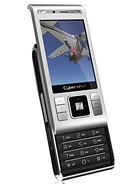 Sony Ericsson C905 Plus:
Sony Ericsson C905 Plus:
The Sony Ericsson C905 Plus is an upgrade to the already popular C905, adding extra features that Sony expects to keep this model at the top of the list.
The camera is an 8.1-Megapixel model and includes a high quality Xenon flash as well as Sony’s Smile Shutter. Activate the function with a press of the shutter key and as soon as your subject starts that cheesy grin, the camera fires. A simple to use two-press autofocus system works well, as does the face detection function, which can detect up to three faces in a single shot.
The display screen, at 2.4 in, is smaller than its rivals, but it does give bright and clear images. A built in accelerometer switches the display mode between portrait and landscape for certain applications. A clever feature is the Sony BestPic option, which takes a series of seven pictures in close succession, enabling you to pick the best of the bunch.
The device includes GPS capabilities, so geo-tagging is supported. The video shooting capabilities are fine at 30 frames per second, with smooth action.
As a phone the device performs well, with clear, high quality performance under a number of varying conditions.
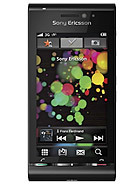 Sony Ericsson Satio:
Sony Ericsson Satio:
This is the top end offering from Sony Ericsson, combining the best of the Walkman and Cybershot brands. It appears that Sony is positioning this device as a multimedia device and has even included a standard port on the phone to enable connection to a TV.
The 12.1-Megapixel camera in the device is one of the best around. A smart sliding cover clicks solidly into place, revealing a high quality lens and internally it has a plethora of options and goodies. Tapping the screen allows you to focus on specific objects and the Sony BestPic option, as on the C905 Plus is excellent. Add in face detection, macro mode, sports mode and it is a phone ready to compete with most digital cameras.
Not content with these, the Satio also offers Smile Shutter and with inbuilt GPS, can also geo-tag your pictures.
Video shooting is also excellent on the Satio, with VGA recording at 30 frames per second no problem. A second LED video light enables late night video shooting.
However, away from the camera functions, the Satio has a disappointing resistive touchscreen interface. Some functions require a single touch, while others require a double tap. Call quality appears to be OK, but some users have complained that calls seemed to cut out at the receiver end, despite good coverage.
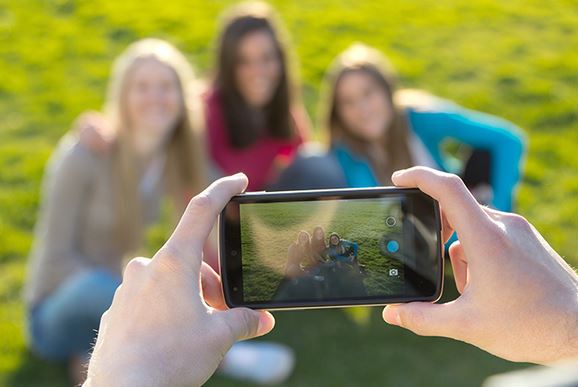 Camera Jargon Simplified!
Camera Jargon Simplified!
Foxed by the tech-speak? Here’s a brief rundown of the more popular terms in plain English.
Xenon Flash
While LED (light emitting diode) flash units operate at low currents, they produce a soft illumination and can operate continuously for video operations. Xenon flash units produce a brighter, whiter light source and operate at a much higher current. Many camera phone manufacturers install Xenon flash units for still shooting and a secondary LED light source for video shooting.
ISO
ISO reflects how sensitive the camera sensor is to the amount of light falling on it. In a conventional camera, ISO refers to the sensitivity of the film used, but in digital photography, the ISO value can be varied from shot to shot. A higher ISO value reflects higher sensitivity, so you can either take a picture in dim light or select a faster shutter speed according to the conditions. But remember that just as in film cameras, a higher ISO value will probably result in more “noise” (or “graininess”, in film terms.)
Geo-tagging
When a camera phone includes GPS facilities, it is possible to add geographical locating details to the image captured by the phone. This enables the location where the photo was taken to be displayed later, providing a convenient reminder of the actual location.
Macro
Macro photography has long held a fascination for many. Simply stated, it is the ability to take extreme close up photos of objects, such as plants or insects without losing focus or details.
Face Detection
Face detection involves sophisticated computer technology that actively looks for specific face patterns in an image, then automatically adjust the focus and exposure to suit. Some manufacturers have added to the basic algorithms to extend the facility to look for specific facial expressions, such as open eyes and upturned mouths to enable smiles to be captured at exactly the right moment.